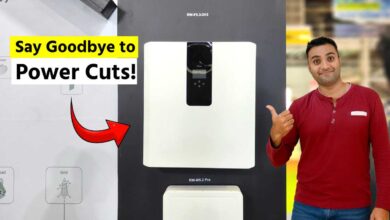C10 vs C20 Battery: Which One Is Right for Your Inverter

C10 vs C20 Battery: Which One Is Right for Your Inverter : Whenever it comes to buying a battery for an inverter, many people do not know that you get batteries of C10 and C20 rating in the market. That is why many times, if the wrong battery is used, the battery gets damaged very quickly and the battery does not give good backup. So before buying a battery, understand your need and then choose the battery. If you do not know what is the difference between C10 and C20 batteries, then in this article you will be given complete information about it.
What do C10 and C20 ratings mean
C10 and C20 ratings are used for discharge rate and capacity. This rating tells you how long it takes to discharge a battery and how much load we can run on a battery.
C10 Battery
C10 batteries are designed in such a way that they can be fully discharged in 10 hours. If you discharge a C10 rated battery in 10 hours, it will give full backup and its life will also remain intact. For example, if you discharge a 150Ah and C10 battery with 180W, it will be discharged in about 10 hours.
But if you run a load of more than 180W, then this battery will give very less backup. Like on 180W load it will give 10 hours backup, then on 360W load it will give about 4 hours backup and similarly on 720W load it will give about 1 hour backup.
This type of battery is currently used in solar systems because we get a lot of electricity from the solar system during the day, which we have to store in the battery very quickly. So a C10 rating battery is quite good for that.
C20 Battery
Like the C10 rating, this battery will also give full backup and its life will remain only if you discharge it in 20 hours. We cannot use this battery in the solar system because it can be charged or discharged with very low current. You can discharge a battery of 150Ah and C20 rating with 7.5Amp current, that is, you can run a load of up to 90W on it.
That is why this battery is used only with ordinary inverters and where low load needs to run for a long time, this battery is more beneficial.
Luminous NXP 3500 Can Run AC on 2 Batteries
Solar Battery vs Normal Battery
Many people do not know the difference between solar battery and normal battery. That is why many times the battery gets damaged due to choosing the wrong battery. Most of the solar systems use C10 rating battery, but if you mistakenly install a C20 rating battery, then the battery gets damaged very quickly because we get high current from the solar panel and if the battery is charged with high current, it always gets damaged.
That is why you should always use a battery that supports high current in the solar system. Normal batteries are of C20 rating, which we can use only on normal inverters. But today we run a lot of load even on normal inverters, that is why you should use a battery of C10 rating even on a normal inverter.
What is Battery Rating
As we all know, batteries are used in different ways in many different places. That is why you get to see batteries of different ratings. Above you have been told only about C10 and C20 rating batteries, but apart from this, batteries of many different ratings are available in the market. It is explained below.
C1 Rating Battery
Where you have to run a very heavy load for just 1 hour, C1 rating battery is used. In many places we have to run heavy load in emergency during power cut, so C1 rating battery is very good for that.
But C1 rated batteries are rarely seen in the market because they are used in very few places and their cost is also high. That is why these batteries are manufactured very rarely.
C5
Where there is a power cut of about 5 to 6 hours and heavy equipment like air conditioner has to be run, C5 rating battery is suitable for that. But in today’s time lithium battery is being used, on which you can run heavy load and can also fully charge it in four to five hours.
C100
This type of battery is used for long term backup where any system is kept on standby mode. That is why the power consumption of that system is almost negligible. So a single battery can provide backup for almost 100 hours. That is why C100 rating battery is used there.
conclusion
Choosing the right battery gives you the right backup. That is why first of all you have to understand your requirement. If you have to run a low load for a long time, then you can use a C20 rating battery. If you have to run a heavy load for a short time, then you can use a C1 rating battery.
But if you have to run a very high load, the load of the entire office, factory or building in an emergency, then you can use lithium batteries, in which you can run a load of up to 50 kW for 1 hour. Before buying a battery, know the difference between C10 and C20 batteries





